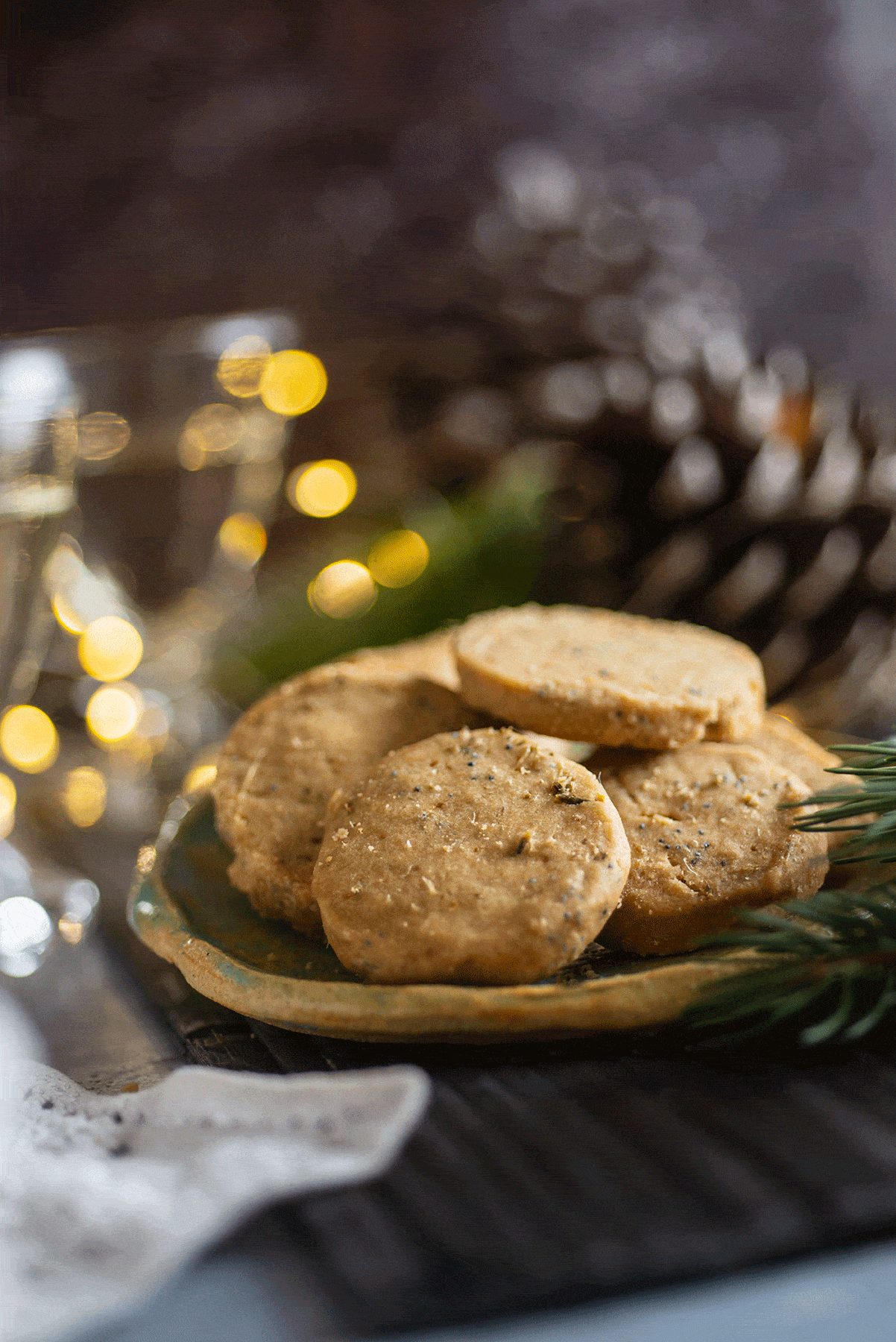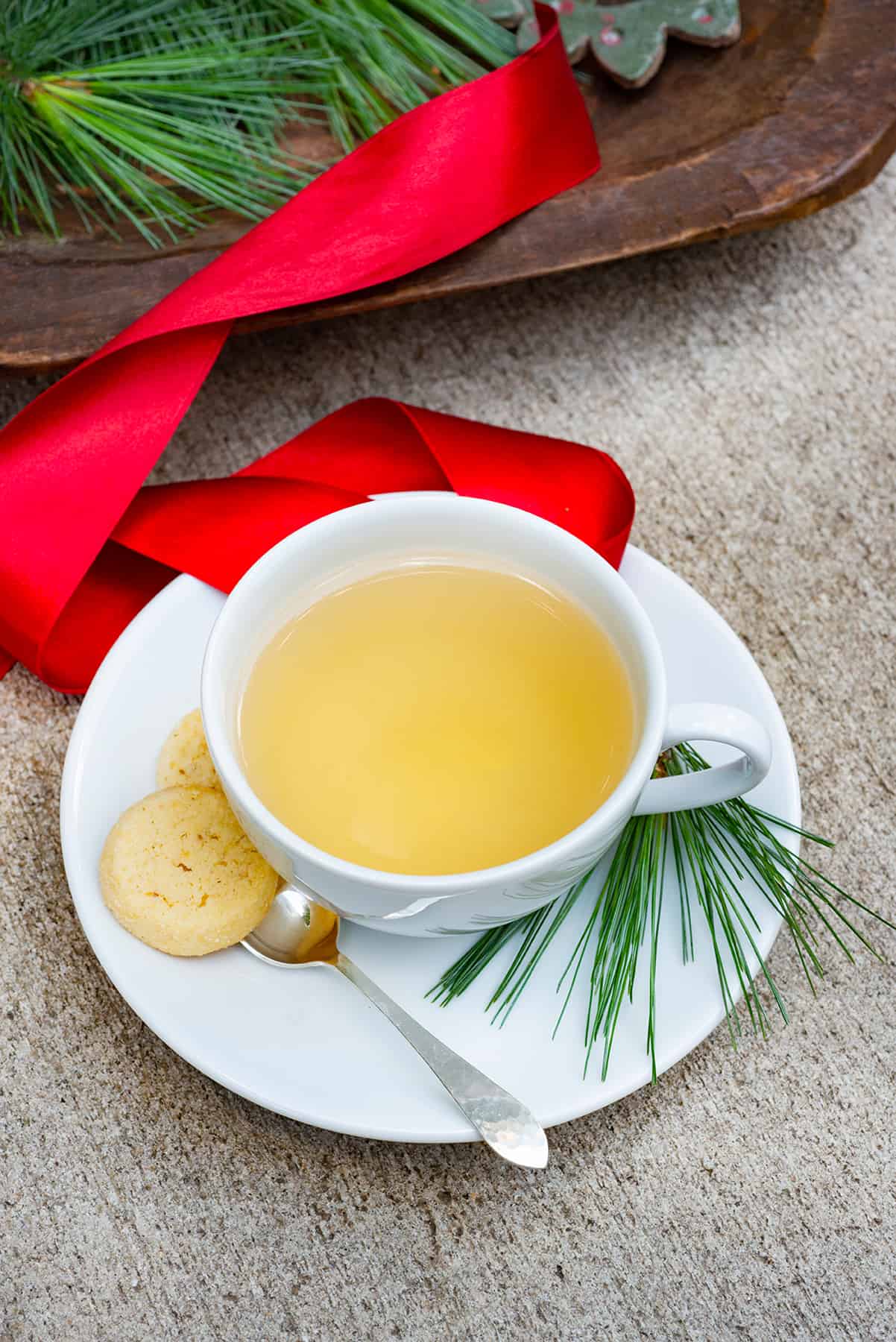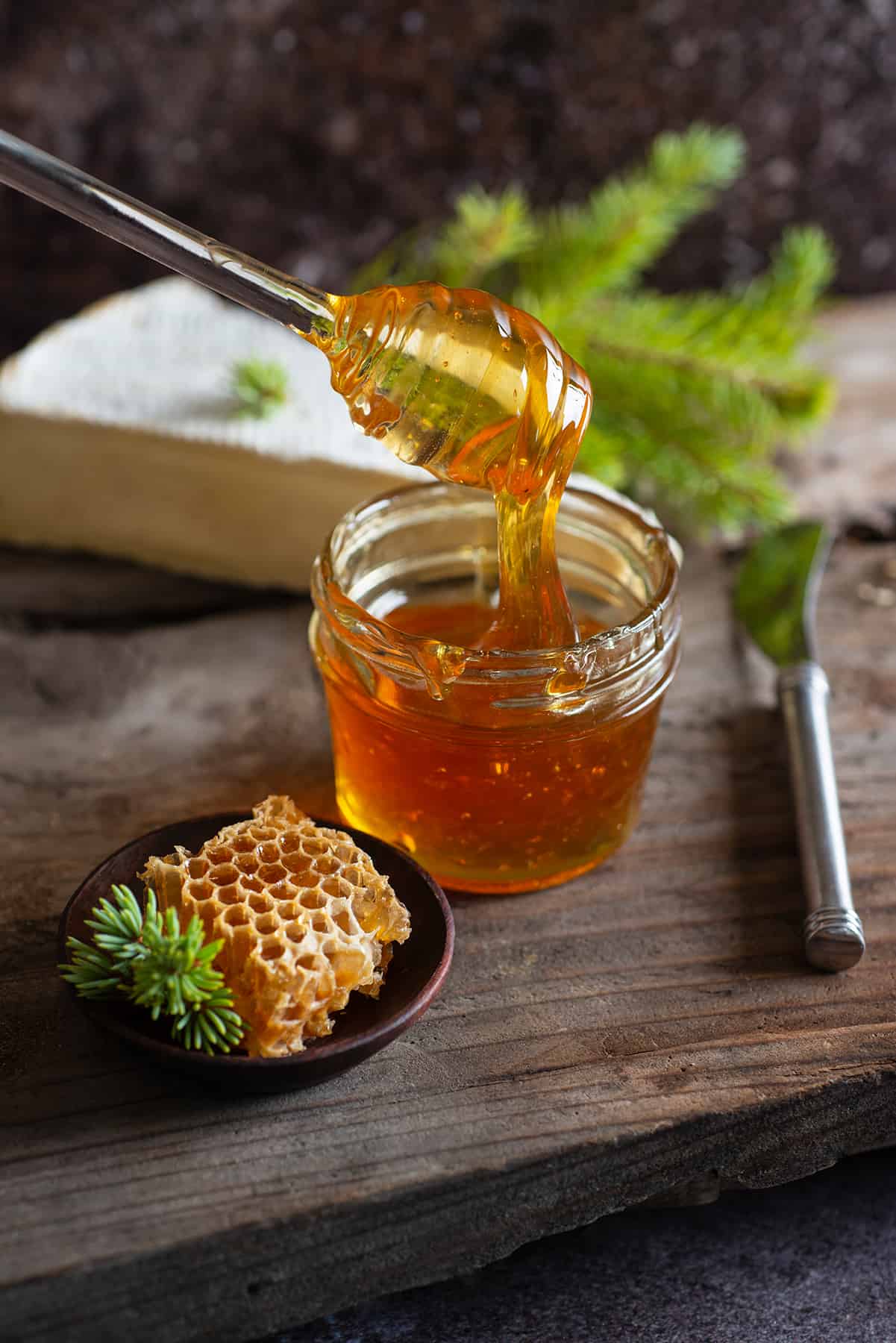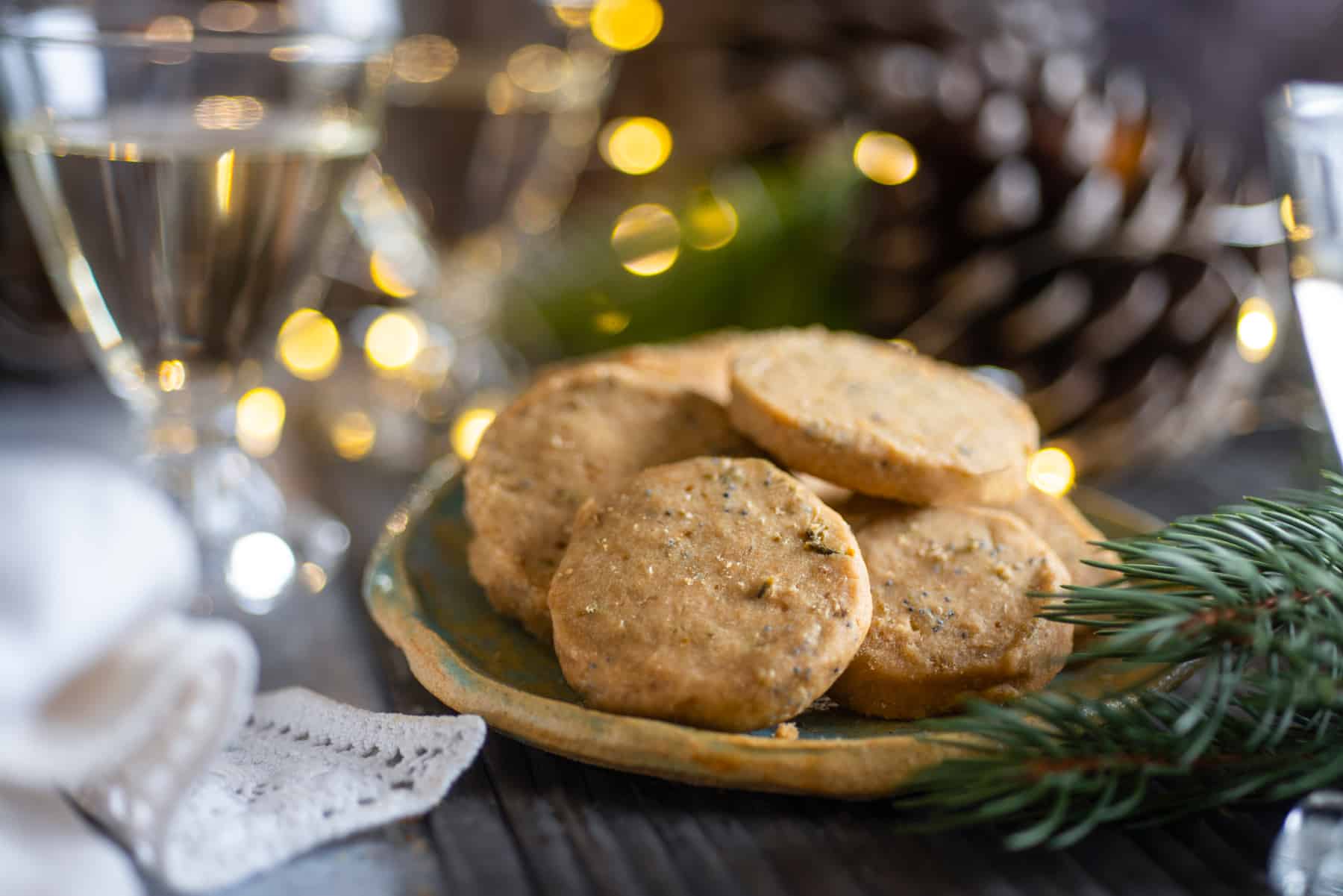Written + Photographed by Paulette Phlipot
—
Just by looking out the window, there’s a good chance you will spot an evergreen tree belonging to the pinaceae family. Standing tall, these lighthouses of the forest include conifers like spruce, fir, and pine, which seem to be most celebrated in our culture for their use as Christmas trees. However, the spiny needles that account for their leaves have a long history of culinary and medicinal use, as well, providing endless opportunities for us to enjoy the benefits of these trees year-round.
Certain species of pine needles contain high amounts of Vitamins A and C. In fact, drinking pine needle tea was a known treatment for scurvy in the 18th century, as the amount of Vitamin C in one cup of tea can provide up to four times the amount obtained from a glass of freshly-squeezed orange juice. Sailors put pine needles in their rum barrels to increase their Vitamin C intake when they ran out of lemons and limes. And, indigenous populations have historically used pine needles to heal wounds and conditions of the respiratory system.
But, before you start munching on your Christmas tree, it’s important to identify it first, and make sure it’s safe for consumption.
If you’re pregnant, planning to become pregnant, or breastfeeding, avoid consuming needles. If you are taking a prescription medication, check with your doctor before consumption, as well.
What kind of tree is it?
Slowing down and connecting with nature has its obvious benefits, and learning how to correctly identify plants and trees is part of the fun of foraging. Not all conifer trees are edible—some are even poisonous, like Yew, Lodgepole, and Norfolk pine. So, it’s important to identify them correctly before consumption. Observe the number of needles in the branch’s cluster, the length of the needles, and the color of the tree’s bark. Notice if the tree has pinecones, and consider its height and shape.
The golden rule of foraging is: Never eat a plant until it’s properly identified, and make sure to reference multiple trusted sources, including professional expert guidance. Use an app like PictureThis as your first point of reference, and then back it up with a book or a trusted naturalist.
Look for these trees in the Tetons: blue spruce, Douglas fir, subalpine fir, and Western white pine (aka, Idaho white pine).
How do the needles taste?
Once you’ve correctly identified a tree, start nibbling as you walk or ski, as the flavor of the needles varies between individual trees and throughout the seasons. You can just taste the difference. Be patient and observe the smells and tastes that jive with your specific palate. The spring needle tips of pine’s cousins, spruce and fir, are a known delicacy—they taste citrusy, and the fresher, the better. But, don’t eat them by the handful! Conifer needles contain a small amount of turpentine (as do all members of the pinaceae family), so don’t overdo it or you may get sick.
How much should I harvest?
Never cut off the tip of the tree, as this can stunt its growth.
Be mindful to not harvest too many of the tree’s new tips. (My rule of thumb is: take a little, leave a little).
You don’t have to be as conservative when picking mature needles, but don’t overharvest any one tree, especially since you need very few needles for homemade concoctions, anyway.
The easiest way to start implementing conifer needles into your kitchen routine is by making a simple tea (tisane). Needles can also be dried and used later, or infused in oil, vinegar, or honey. Infusing needles in olive oil makes a great base for a festive salad dressing. Including them in a meat or poultry glaze is another way to bring the forest to the table. The adventure of collecting needles and serving them at home, is a great conversation starter, too, as you gather around a warm winter fire.
Be sure to avoid harvesting from trees that may have been sprayed with pesticides or insecticides, such as those growing next to a roadway.

Pine, Poppy, and Lemon Shortbread
—
Douglas fir needles are the suggested ingredient in these cookies, although pine, spruce, or fir needles will all add a foresty taste to this festive dessert.
—
1 cup butter, room temperature
½ cup coconut sugar
1 teaspoon vanilla extract
zest and juice from one lemon
¼ cup edible conifer needles and/or tips
1 ½ cup all-purpose flour
½ cup arrowroot powder
1 tablespoon poppy seeds
¼ or ½ teaspoon salt
- Line two baking sheets with parchment paper.
- Rinse and dry the needles; pulse them in a food processor or spice grinder, or chop very finely.
- In a mixer, cream butter until smooth. Add sugar, vanilla, and lemon juice and zest until mixed well.
- Add the conifer needles, flour, arrowroot, poppy seeds, and salt. Mix to combine.
- Place dough on a flour dusted surface and form two logs. Place each log in plastic wrap and place in the freezer for 30 minutes.
- Heat the oven to 350° F.
- Unwrap the dough and cut into ¼-inch cookie rounds. (Alternatively, you can flatten the dough into a disk and refrigerate, then roll the disc to ¼-inch thickness and use cookie cutters.)
- Place cookies 1 inch apart on parchment-lined baking sheets. Bake for about 10 minutes or until the edges are golden brown. Transfer to a cooling rack.

Simple Pine Tisane
—
White pine is a favorite to use in this tea. It’s high in Vitamin C (great for fighting off colds), and helpful as an expectorant. When cooled, it can be used as an antiseptic wash, as well.
—
1 to 2 tablespoons pine needles, chopped and bruised
1 cup water
honey, to taste
- Rinse and dry pine needles, chop them into small pieces and mash them a bit, then place them in a teapot.
- Pour just boiled water over the pine needles.
- Cover and steep for at least 10 minutes.
- Strain and enjoy. Add honey to taste.
Note: If you like a delicate tasting tisane, look for bright green, young needles.

Infused Forest Honey
—
As a remedy, this infusion is helpful for easing a bad cough, soothing a sore throat, and calming lung irritation. As a culinary treat, enjoy it drizzled over cheese, like brie, or stirred into your favorite tea. Young, fresh tips work best.
—
1/3 cup edible evergreen needles
1 cup raw honey
- Pull the needles from the branches, rinse and dry.
- Bruise the needles by placing them on a cutting board and pounding or pressing with a glass jar.
- Gently heat the honey in a small saucepan over low heat, just enough to make it easier to incorporate the needles. (Don’t heat the honey more than needed, in an effort to keep the benefits of the raw honey intact.)
- Pour the honey into a jar and stir in the needles. Put on the lid; label and date; store in a cool, dark place.
- Flip the jar occasionally to keep the needles covered. Taste it often. Within 4 to 6 weeks, the honey should be well-seasoned.

